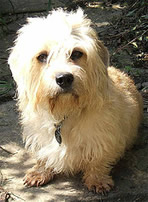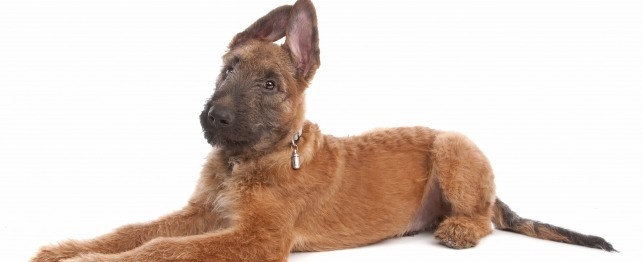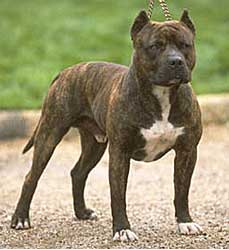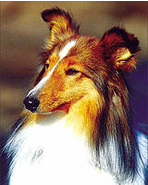
The Labrador Retriever has several versions – Black, Yellow, Chocolate,
and Silver – depending on the coat color. Whichever color, this breed
has a short, dense, low-maintenance, and water-resistant double coat. It has
medium-sized eyes that are set apart well, V-shaped ears, and wide nose. Its
tail ranges from medium to long, thick at the base and tapering towards the
end. This large breed is sturdy and muscular. Furthermore, it is intelligent,
responsible, and protective that it is often employed to guide the blind and
other persons with disabilities. In fact, it was once tagged as St. John’s
Dog. This canine is also fondly called as the Lab. It is, if not, among the
most popular (and highly valuable) breeds in the US, UK, and many parts of
the world.
Life Expectancy:
10-12 years
Energy Level:
Playfully energetic.
Living Conditions:
Flexible; but needs outdoor exercise.
Barking:
Average.
Exercise Needs:
Daily walk or yard play.
Breed Group:
Sporting
Size:
Medium-Large
Height:
21 to 24 inches
Weight:
55 to 75 pounds
Standard Hair Colors:
Black, Yellow, Chocolate and rarely, Silver.
National breed club:
National Labrador Retriever Club
The Labrador Retriever originated from Newfoundland, Canada. In the early times, it was taught to haul fishermen’s nets into the shore by jumping overboard into icy waters. Then in the 1800s, this breed was transported into England by English ships from Labrador, which was located on the Atlantic Coast of Canada. Its list of talents and skills include hunting, tracking, retrieving, watchdogging, police work, illegal drugs detection, guide for the blind and people with other disabilities, search and rescue, and tests/games of agility and obedience.
True to its name, the Labrador Retriever loves to hold items in its mouth. Although equipped with an athletic physique and requires an active lifestyle, this dog can also be laid-back. It is the perfect pet, aside from being easy to housebreak and train, the Lab is affectionate, loyal, patient and gentle to its humans even to kids. It is also high-spirited and playful. It loves to swim and enjoy other bonding activities with its human family since it craves to be with them always. It gets along well with other pets, a sign of its friendly and confident nature. Once trained, it is highly reliable as a housepet and working dog.
This dog must be given sufficient exercise, especially outdoors.
Apartment life is okay since the Labrador Retriever can fairly unleash its energy indoors by being active. But it will help a lot if it gets some outdoor exercises and outings where it can make a good run and shed off those calories.
The Labrador Retriever is low-maintenance, grooming wise. Its short double coat only needs regular brushing using a firm bristle brush. It should also be given bath and shampoo only when necessary. This dog is an average shedder.
The Labrador Retriever is susceptible to hip dysplasia and eye disorders. It is also a big chewer and therefore should be given moderate rations in order to prevent it from getting overweight.
...for all its talents and charms, it might not be easy to settle for something else. Yet, the Flat-Coated Retriever is one fine choice. This breed, said to contain the blood of the Labrador Retriever, is also a great family pet and an asset working dog whether on land or in water or marshy areas. It has a great scenting power; is athletic; skilled in hunting, retrieving and tracking; as well as very affectionate and even-tempered.

 Dandie Dinmont Terriers: A guide to dogs and puppies of the Dandie Dinmont Terrier breed
The Dandie Dinmont Terrier!
Dandie Dinmont Terriers are usu
Dandie Dinmont Terriers: A guide to dogs and puppies of the Dandie Dinmont Terrier breed
The Dandie Dinmont Terrier!
Dandie Dinmont Terriers are usu
 Chihuahua - Short haired
Chihuahua - Sh
Chihuahua - Short haired
Chihuahua - Sh
 Choosing a Belgian Laekenois- Belgian Laekenois Breed Profile
Choosing a Belgian Laekenois
Choosing a Belgian Laekenois- Belgian Laekenois Breed Profile
Choosing a Belgian Laekenois
 Staffordshire Bull Terrier
Staffordshire
Staffordshire Bull Terrier
Staffordshire
 Shetland Sheepdogs: A guide to dogs and puppies of the Shetland Sheepdog breed
The Shetland Sheepdog!
The Shetland Sheepdog is often said
Shetland Sheepdogs: A guide to dogs and puppies of the Shetland Sheepdog breed
The Shetland Sheepdog!
The Shetland Sheepdog is often said
Copyright © 2005-2016 Pet Information All Rights Reserved
Contact us: www162date@outlook.com